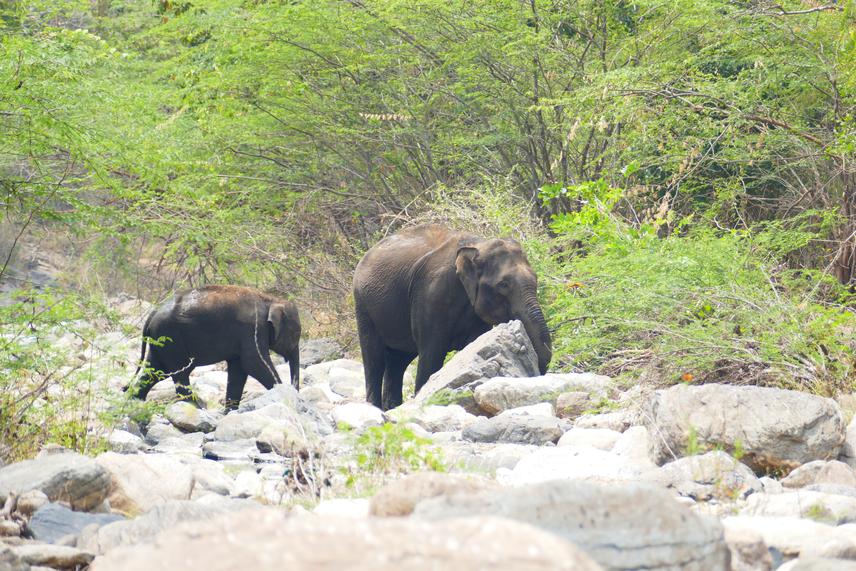Anisha Padur Sankaranarayanan
Endangered animal elephant’s habitat has been subjected to tremendous pressure in recent days than ever. Their peaceful existence has been severely hindered by habitat fragmentation, degradation and human intrusion. In Nilgiri Biosphere Reserve of Tamil Nadu, we observed an alarming variety of anthropogenic materials such as broken metal spoons, plastic wrappers and masks present in their dung piles. So, we thought of addressing this life-threatening issue with the aid of both scientific and community-based approach.

Elephant searching for food and water along with its calf in Sathyamangalam Tiger Reserve, Tamil Nadu, India. © S. Mehabharathi.
This study is planned in such a way to devise an effective conservation action plan to protect elephants from the xenobiotics in the long run. Despite the fact, that plastic ingestion by elephants is accidental, the probability of plastic ingestion has been increased after the intensification in human activities across protected areas of Nilgiri Biosphere Reserve. There is a paucity of information regarding, how plastics gained entry into a plastic-free zones of protected areas? The main aim of the project is to find out how the outlanders like plastics and other anthropogenic materials enter into the diet of elephants. Whether it comes through the people who visit the forest or tribals who dwell near the forests or through crop raiding/ elephant visits to the nearby villages.
The second aim of the project is If garbage raiding is a cause, Why the garbage pile is in the near vicinity of elephant habitat? What might be the factors alluring the elephants to raid garbage piles? And to record the necessary actions taken by the forest department to exterminate plastics from protected areas and are they effective/not? What is the role of eco-tourism/humans in plastic dissipation into ecologically important landscapes? Finally come out with the solution to prevent the elephants to access to garbage piles containing plastics. This study is formulated to estimate the abundance of anthropogenic waste in NBR in elephant dung. Then the hotspots of plastic dissipation will be pinpointed and brought under surveillance to record the severity of the situation. Native people will be notified about the harmful consequences of irrational waste dumping and encouraged to lead a plastic-free life through conservation education and workshops.